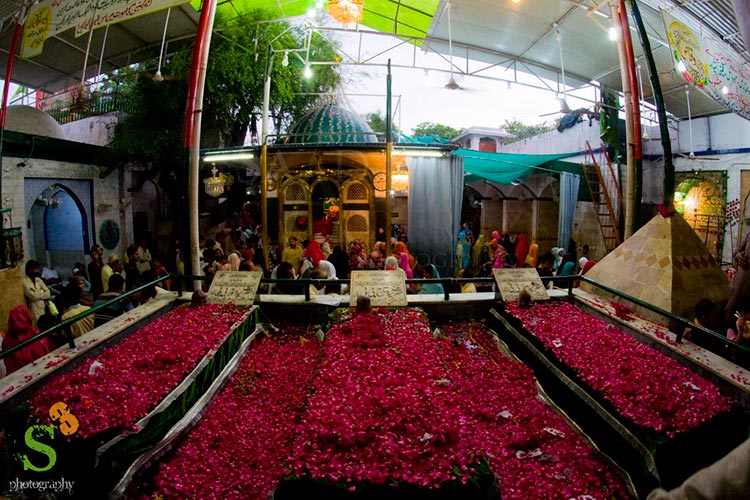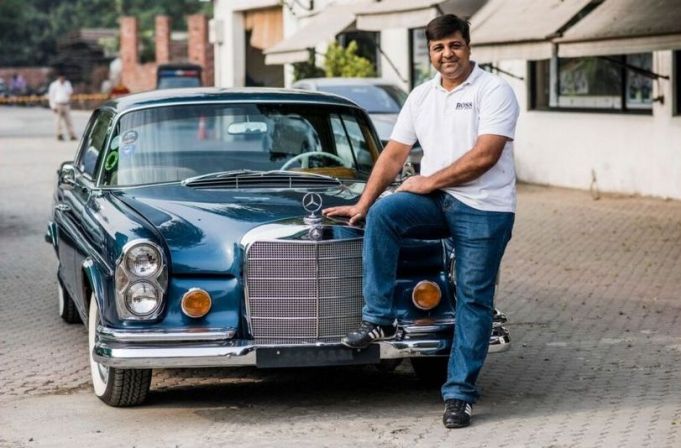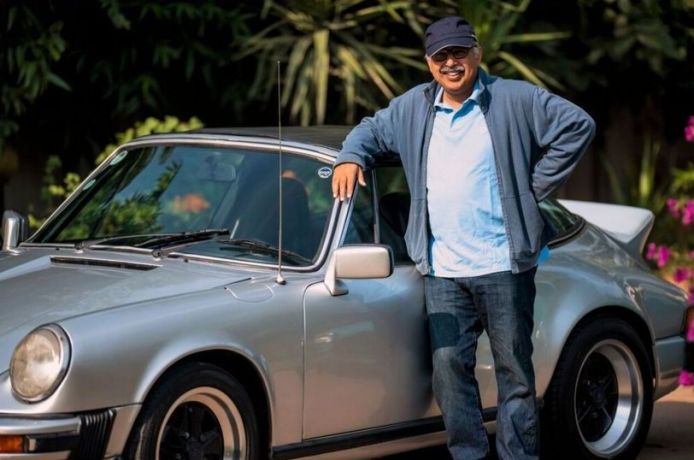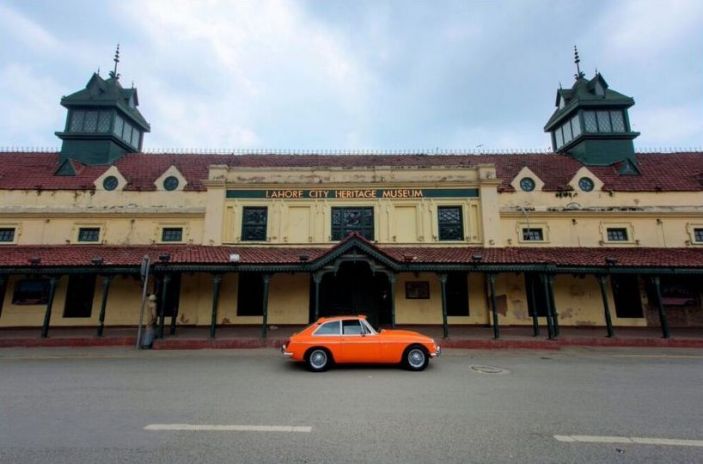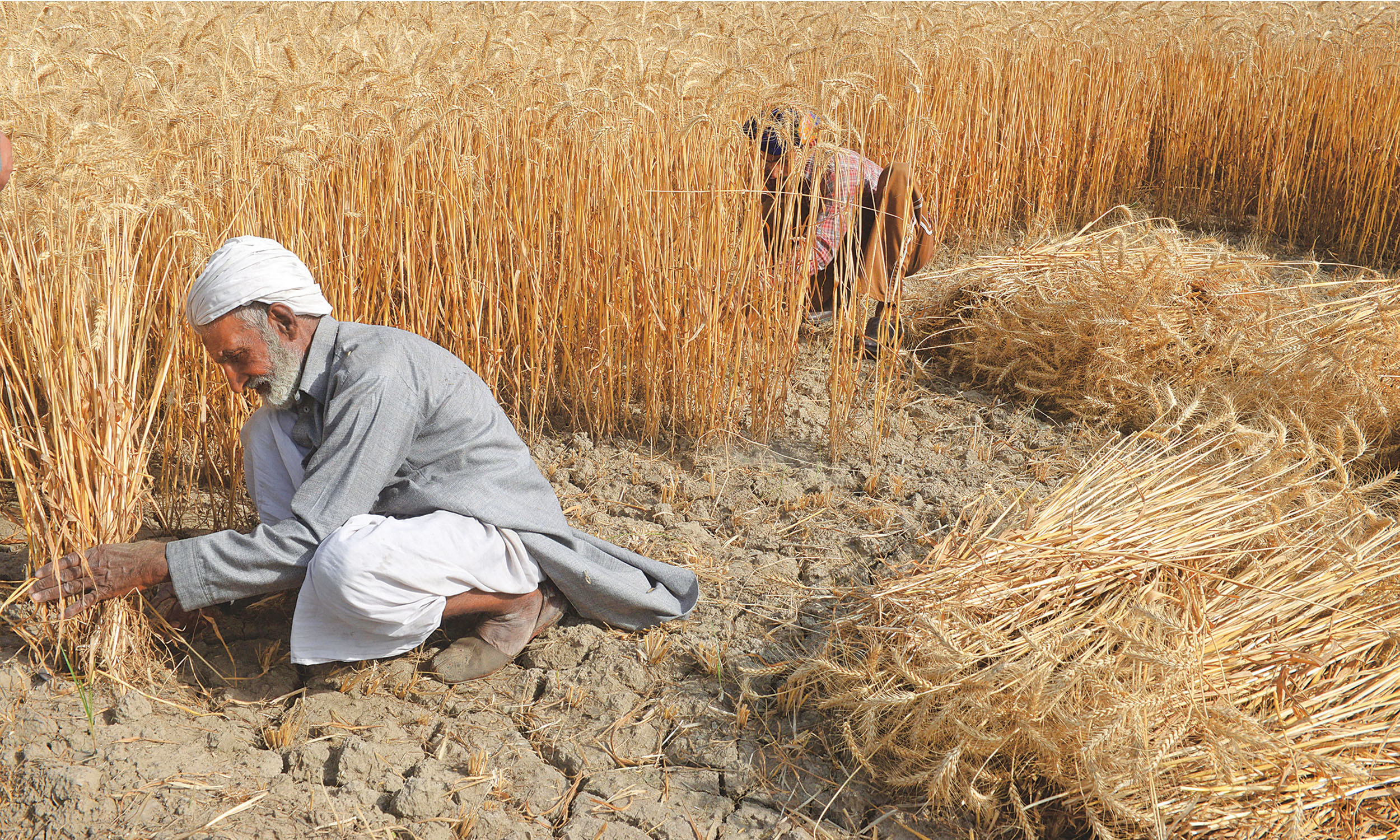
Javed Iqbal travelled to Faisalabad International Airport 15 years ago to catch a one-way flight to Dubai. Two years later, in 2004, he was sent back to Pakistan after medical tests revealed that he was infected with the human immunodeficiency virus (HIV), a precursor to acquired immunodeficiency syndrome (AIDS). Then 27, he had no idea how and where he had contracted the disease.
Iqbal then attempted to move to Saudi Arabia for work, but his job application was rejected after he underwent a medical test. Embarrassed and dejected, he resumed his life in his native village, Chak No 127, Bhattiwala in central Punjab’s Chiniot district, without telling anyone about his illness. He also did not seek any treatment. He was scared of being named – and shamed – for suffering from a disease generally perceived to be the result of indulging in sex practices that religion and society abhor and prohibit.
Some time later, Iqbal married a local girl despite his deteriorating condition. He died in February this year, leaving behind his widow who, according to a local health worker, is also infected with HIV.
Bhattiwala lies midway along a 37-kilometre road that connects Chiniot with Faisalabad. Like any other village in this part of the country, it has mud-plastered houses and herds of buffaloes meandering lazily amid its green fields. Most of its inhabitants are small farmers who, like Iqbal, require supplementing their meagre farm income with additional work. The village is a picture of official neglect. It has only one government primary school (set up in 1956-57), its drainage and sewerage systems are primitive and it does not have a single government-run healthcare facility.
It is by no means equipped to tackle the HIV/AIDS scare that, in recent years, seems to have hit a large number of people living in the village, including men, women and children as young as five years of age, says Mazhar Qayyum, who runs a private school near Bhattiwala. He switches between English and Urdu as he explains how the entire village blames Iqbal for the spread of the disease. Whether that blame is entirely justified or not is of no consequence to villagers like Ahmed Yar who have lost almost their entire families reportedly to HIV/AIDS.
Wearing a worn-out shirt and a piece of unstitched cloth wrapped around his legs, Yar is the personification of poverty and resignation. A farmer in his 30s, he has lost nine members of his family (his father, mother, six siblings and his sister-in-law – all in the previous 12 months). They were being treated by a local quack doctor before their condition deteriorated and they were taken to Faisalabad’s Allied Hospital, the largest public sector medical institution in the area. The doctors there found that they were suffering from neurological complications. Other than that, Yar has no test reports or other documents to prove or disprove whether their deaths were linked to an HIV infection. “There is no point in finding out the reason for their deaths. It will not bring the dead back,” he says.
What he is more concerned about is the fact that his teenaged sister has a terrible cough that never seems to go away, and two of his paternal cousins have been found to be infected by HIV through tests recently conducted by the government.
Another local family has lost all its 12 members in the last two years reportedly to HIV/AIDS. Their house is empty and its boundary wall has all but collapsed.
In another part of the village lives Kaneez Bibi, a housewife in her 30s, who has three young HIV-infected patients in her home. Her four-year-old son and her two teenaged step-children – a 16-year-old boy and a 14-year-old girl – were found to be infected with HIV when a government team took their blood samples for testing a few months ago. None of the three children go to school. The eldest works in the fields despite his failing health.
On a recent October day, Kaneez Bibi’s very agitated little son is suffering from a bloated stomach. His hands are soiled and his skin is ruptured and blistered. His sister walks around the house chewing her red dupatta. She looks much younger than her age. Both the children appear bewildered and scared. The children receive free government-provided antiretroviral drugs that slow HIV/AIDS, but there has been little improvement in their condition. This could be because their parents are not observing the recommended precautions. The tablets they consume daily are kept in the open even when they are required to be stored away from sunlight at a temperature below 30 degrees Celsius. The patients also need to undergo weekly examinations by a doctor to monitor and address any side effects that the drugs may cause.
The medicine has supporting literature that states these recommendations very clearly but it is written in French and English — gibberish for the children’s illiterate parents. The doctors at the Services Hospital in Lahore who prescribed the medicine never said anything about any dangers or precautions, says Kaneez Bibi.

Jaffer Ali, an agriculturist in Bhattiwala who practices medicine in his spare time, has been the village’s main source of diagnosis and treatment of all major and minor ailments. An untrained and unregistered medical practitioner, he has only a smattering of information about medicine, but every household in the village deems him their saviour. He does not operate a clinic but visits his patients at their homes to administer some known painkillers, steroids and antibiotics for almost all problems or diseases. At least three other quacks similarly operate in the village, with as little expertise. Whether or not they know how HIV/AIDS is spread is subject to speculation, but they are certainly ill-trained to treat its sufferers.
The quack doctors’ favourite mode of treatment is administering injections — using one needle to give many injections and to many people. The villagers, too, believe injections work more quickly than tablets and syrups. Little do they know that each injection needs to be given with a new needle to avoid transferring one patient’s infections to another. And that could be a major reason why HIV/AIDS has spread so widely in Bhattiwala.
Zafar Sadhu, a local farmer, alleges that the quacks operating in the village have known the dangers of giving injections with used needles all along. But they would never admit that HIV/AIDS is transferred from infected people to uninfected ones through reused injection needles. “They would rather blame it on illicit sex than on their own wrong medical practices,” he says.
Such blame games became public early this year when stories of HIV/AIDS causing multiple deaths in Bhattiwala became too frequent for the local residents to ignore. Some of them wrote letters to Chiniot’s district administration, requesting the authorities to carry out an investigation. They also complained about the activities of illegal healthcare providers and sought the appointment of a qualified doctor for the village, says Sadhu.
A government medical team finally visited Bhattiwala in July this year. Headed by Dr Mushtaq Bashir Akif, then working as Chiniot’s district health officer, it took blood samples of 350 local residents randomly selected out of a total population of approximately 4,500 people, and tested them on the spot with portable kits. The tests found the hepatitis C virus in almost 250 of the samples. Even more worryingly, 45 samples were found to be HIV-infected.
The medical team took additional blood samples of those suspected to be infected with HIV and sent them to a government laboratory in Lahore for polymerase chain reaction (PCR) testing since on-the-spot tests are sometimes inaccurate, say health officials in Chiniot. PCR testing is deemed 100 per cent reliable because it is performed in a controlled laboratory environment with sophisticated equipment. The district administration claims it has not yet received the results of the tests from Lahore.
The electronic media soon got wind of these developments. Many television channels subsequently produced news pieces about those suffering from HIV/AIDS in the village. As news spread, Dr Adnan Zafar Khan, then the director of the Punjab AIDS Control Programme, travelled from his office in Lahore to Chiniot to find out more about the situation first-hand. In August, he appeared on News Wise, a news show on Dawn News TV and acknowledged that PCR results had verified the prevalence of HIV infection in Bhattiwala. However, he denied that there had been any deaths in the village due to the infection.
Soon afterwards, he was transferred out of his post as part of what the government called a routine bureaucratic reshuffle. Sources in the Punjab health department allege that he was punished for revealing the test results.
Dr Mushtaq Bashir Akif denies the prevalence of HIV/AIDS in Bhattiwala altogether. “Calling the sick people in the village as HIV positive is incorrect,” he says during an interview in his office at Chiniot’s District Headquarters Hospital (DHQ). Posted as medical superintendent of the hospital this October, and dressed cheerfully on a recent Saturday in a polo shirt with white and blue horizontal stripes, he suggests that the ailment afflicting the village could be something else. “Nine out of every 10 people living in Bhattiwala are suffering from hepatitis C, just like they are in almost every village in the area,” he says, almost chuckling.
His supervisor and chief executive officer of the district health department, Dr Akhtar Husain, rubbishes reports of large-scale deaths in Bhattiwala and claims to have taken multiple precautionary measures. He closed down many barber shops in the area since they could be a major distribution point for HIV/AIDS infection through blades reused for shaving multiple people. He also sealed clinics run by quack doctors in the village in order to save people from used injection needles.
District authorities have additionally registered a first information report (FIR) against three quack doctors for practising medicine illegally in Bhattiwala. Jaffer Ali’s name is not among them. He has been at large since the government crackdown against quacks.

Husain claims to have taken another important step as well: an AIDS centre has been set up at the DHQ hospitals where “a psychologist, a woman medical officer and a laboratory technician” are especially posted to take care of those suffering from HIV/AIDS. “[It] is functional and we are already doing tests here,” he says. Later the same day, situated next to the gynaecology ward, the centre is found locked.
Local residents are not satisfied with the government’s moves. For one, they want the results of the PCR tests revealed. “If HIV/AIDS is not prevalent in the village then why has the government been holding back test results for the last four months,” questions Shahid Yaqoob, general secretary of Chiniot Press Club. “Give the patients their reports and tell them that they do not have AIDS,” he asks of the officials.
When informed about persistent public demands for making the results of the PCR tests public, Husain discloses that the government is not doing so because HIV is a socially sensitive disease.
In Yaqoob’s opinion, there is another reason why the authorities are concealing the results. District administration officials want to ensure that “they are not held responsible” for letting a healthcare crisis develop right under their noses, he says, but insists that people will remain sceptical as long as the government is in denial. “Hiding the problem will not help the villagers.” Openness, on the other hand, will assist the authorities in preventing further spread of the disease, he believes.
Mazhar Qayyum, who runs the school near Bhattiwala, holds similar views. He wants the district administration to acknowledge the prevalence of the disease and send its representatives to public and social gatherings such as weddings and funerals to create awareness. People in general and medical practitioners and barbers in particular need to be educated on how HIV/AIDS and hepatitis C is spread and how their refusal to use a new needle or blade per person is a major reason for the prevalence of these deadly medical problems, he says.
He mentions the elderly people in his village, mostly uneducated, who often ask, “What is this disease? We have never heard about it before.” Convincing them to acknowledge the presence of HIV/AIDS among them, as well as making them understand the urgent need for its treatment, is a task that the government’s routine moves will never accomplish, he says.
Nazir Masih was working in the United Arab Emirates in 1990 when he discovered that he was infected with HIV. He came back to Pakistan, publicly declared himself an HIV-infected person and sought treatment for his illness with antiretroviral medicine. In 1999, he collaborated with four other HIV-infected people and together they set up the New Light AIDS Control Society (NLACS), headquartered in Lahore.
Masih visited Bhattiwala recently and claims to have met many HIV-infected patients there. That only less than 10 per cent of the village’s population was ever tested makes it highly likely that there are many more in the village suffering from HIV/AIDS than publicly known, he says. He also claims to know many other villages in Punjab where the prevalence of the virus is as high as it is in Bhattiwala, if not higher.
Masih quotes reports by the National AIDS Control Programme, a federal government entity, stating that Pakistan has around 133,000 people infected with HIV. Of these, only 20,660 are registered with various healthcare facilities. An overwhelming majority of these registered patients consists of adult males.
The reason why most patients do not register themselves for treatment is the social and moral stigma attached to HIV/AIDS. This stigma is so strong that healthcare providers often hesitate to treat those who suffer from the disease, says Masih. He knows of patients who were harassed and beaten up at hospitals in Faisalabad and Lahore after people found about the nature of their illness.
The impacts of the stigma are too obvious in Bhattiwala to miss.
Everyone knows everyone in the village and the identities of the HIV/AIDS patients are no secret, often exposing them to social ridicule and exclusion. Some of them complain that local shopkeepers refuse to sell them anything.
Zafar Sadhu recalls how he once went to a quack doctor in a nearby village to seek medical treatment but was made to feel ashamed for his association with Bhattiwala. “The people of your village are being punished for indulging in illicit relationships,” the quack told him. Such public shaming has forced Javed Iqbal’s family to maintain a low social profile and keep its interaction with others in the village to the minimum.
Sadhu also remembers his meeting with an HIV-infected woman in the village. She was desperately weeping and insisting that she had never slept with anyone except her husband. “It was very difficult to explain to her that she had committed a crime and that sex out of marriage was not the only reason why someone would contract HIV/AIDS,” he says.
Moreover, a local labourer in his late 20s reports being treated as an “untouchable” after he was diagnosed with HIV in July this year. “I still work as much as any other labourer but people shun me when they find out about my illness,” he says.
Most of the HIV/AIDS patients also come from the poorest of the poor families. The labourer, for instance, cannot afford to take time off work to get himself medically examined. He is seeking no treatment.
This article was published in the Herald’s November 2017 issue. To read more subscribe to the Herald in print.
https://herald.dawn.com/news/print/1153912
The author is a writer and photojournalist with a master’s degree in journalism from the University of Sheffield in England.












